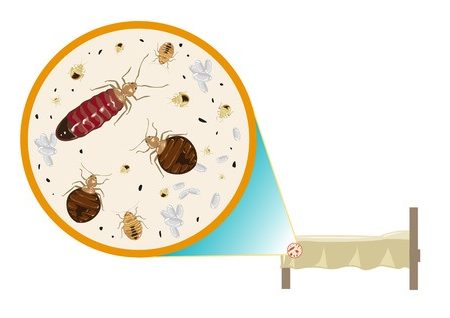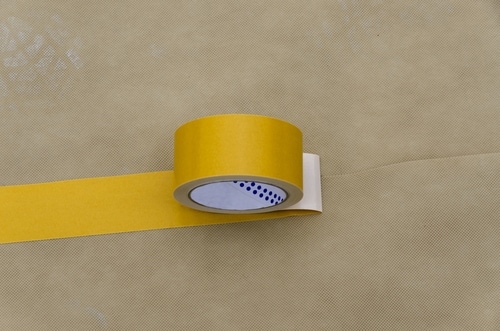Anyone who has had to face the harsh realities of a bed bug infestation is well aware of how difficult it can be to actually find a live bed bug. With their tiny body size, incredible ability to hide in just about any crack or crevice and the fact that they mainly come out at night while you are asleep to feed on your blood, it is clear why they are considered to be one of the most elusive household pests. Even if you notice some of the tell tale signs of a bed bug infestation like the red bite marks they leave on your skin or the tiny droppings they leave on your bed sheets, actually finding visual evidence of a bed bug is the only way to truly determine that they have invaded your home.
Even though they are so good at staying out of sight, there are some things that you can do to increase your odds of finding them. They are instinctual creatures that tend to follow certain patterns like hiding in specific places and being attracted to certain things. As a result, by knowing where they hide and what attracts them, you should be able to locate them a bit easier.

The sooner you realize that bed bugs have infested your home, the easier it will be to get rid of them. Considering that females can lay up to 6 eggs per day, waiting even just a few days can lead to a much more serious infestation, making it more difficult and costly to exterminate them. For this reason, we have put together this quick guide in order to help you find bed bugs in their most common hiding spots and give suggestions on some of the best detection devices available.
Most Common Hiding Spots for Bed Bugs
As mentioned above, bed bugs are very tiny creatures. This of course means that they can hide in very difficult to reach places, some of which you may not even notice can be a hiding spot for any creature.
Generally speaking, though, they do tend to follow certain patterns like hiding near your bed so they can always be near their next meal. They also like hiding in places where their entire body is touching a surface of some sort. To narrow it down for you, check these spots when looking for bed bugs in your home:
- Seams in mattresses and box springs – by far the most common hiding spot of bed bugs. This satisfies everyone of their needs; it is near their food source, it allows them to snuggle between two surfaces and it is an unusual place for anyone to look.
- Bed frame cracks – another favourite hiding spot for bed bugs is any type of crack or crevice on your bed frame, again keeping them close to you out of plain sight.
- Other furniture in your room – pretty much any other piece of furniture in your room, especially upholstered furniture with seams is an ideal spot for bed bugs to hide.
- Clutter on the floor of your room – if your room is messy with clothes and sheets spread on the floor, you can be sure that some bed bugs would choose this as their hiding place.
- Other small spaces near you bed – this can include behind baseboards, inside electrical outlets, behind wallpaper, cracks in the wall, inside alarm clocks and any other tiny space near your bed.

These areas are just a general guideline of places that bed bugs choose to hide. A good practice to get into is to quickly check these areas while you are cleaning the bedroom to keep an eye out for bed bugs. But even knowing these hiding spots, it can still be very difficult to actually find a live bed bug without the help of a professional bed bug control company or an effective detection device.
Catching them in action
An alternative to trying to find them in their hiding spots is to actually catch them at night when they come out to feed. This is a difficult task that does require some discipline, but it will confirm your suspicions rather quickly. Here are some tips on how you can do this:
- go to sleep with a flashlight by your side and set your alarm for about an hour before dawn, their preferred feeding time
- when your alarm goes off try to move as little as possible to retrive your flashlight and not scare off any bed bugs back into hiding
- use your flashlight to examine your bed and body, looking for any bed bugs at work, again trying to move as slowly as possible
The most difficult part of this practice is that you may have to do this for a few weeks before seeing any bed bugs. Using a detection device is a much easier alternative.
Bed Bug Detection Mechanisms
There are several devices available on the market that can be used to find bed bugs in your home, and even some that you can make on your own. These are pretty much bed bug traps, but unlike other traps which are used to eradicate pests, these traps are used to determine that bed bugs are present in your home, leaving the extermination to an experienced professional.

There are two types of detection devices that are commonly used by homeowners and bed bug control specialists. One of them requires that you place it in their direct path, causing them to get trapped inside the device to give you the evidence you need, while the others use chemical scents as baits to lure bed bugs into the contraption. Both are very effective, but often times need to be left out for several weeks to catch even a single bed bug, especially in the case of a small infestation.
Interception devices
One great example of an interception device that you can make on your own is to line the perimeter of your mattress with double sided tape. As the bed bugs make their way from their hiding spot to your body at night, they will get stuck on the double sided tape and remain there until you awake.
Despite what some reports mention that bed bugs can jump, this is not at all true. They can only walk, and are not very powerful creatures so you can rest assured that this interception mechanism will work.
Bed bug baiting devices
The other detection device commonly used to find bed bugs is in the form of a bait which lures bed bugs into a trap. The most common lure used in these devices is carbon dioxide since it is the chemical compound given off by your body that attracts bed bugs to you in the first place.
By following a carbon dioxide trail, bed bugs will enter the detection device which, like most traps, will have a one way door. Once inside, they will remain there until you check the device and decide what to do with them.


